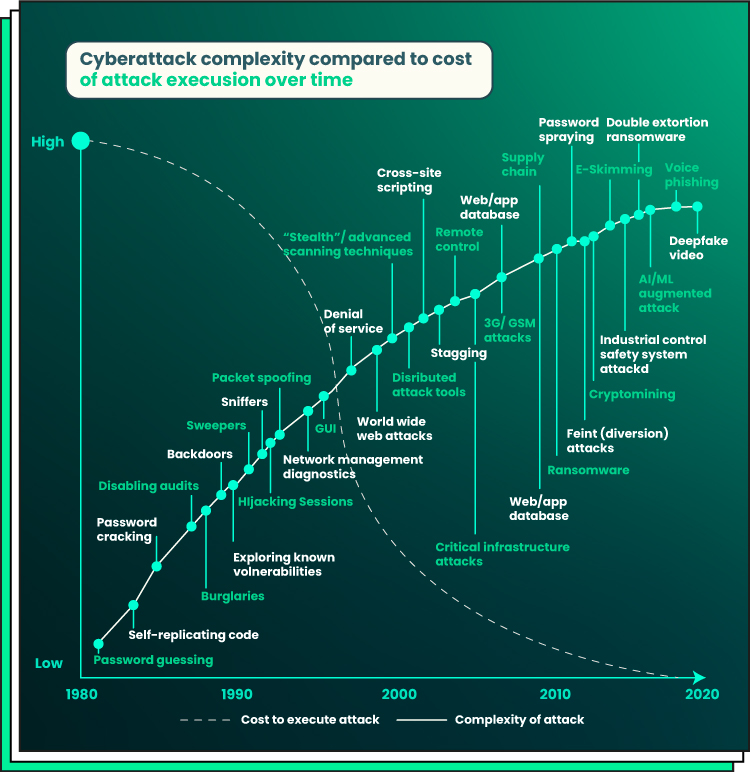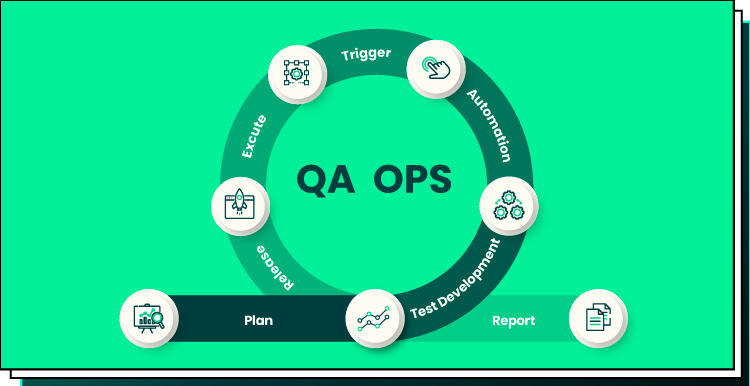In the high-tech-driven world of the 21st century, software solutions and services are at the top of the most-wanted list among both enterprises and individuals. Such a great demand for IT products has resulted in the appearance of a vast supply of digital items – from apps, sites, e-books, and games to web elements (like themes or plugins), templates, tutorials, and printable content. But only a small percentage of them hit it big, whereas the majority goes up in smoke. How come?
It happens because the creators of such bloomers ignore the two mission-critical elements of business success in the current IT market – product validation and digital testing. This article focuses on the latter.
Digital Testing Explained
The ultimate goal of any entrepreneur is to deliver a high-quality product or service that will guarantee maximum customer satisfaction and make consumers come back for more. This imperative is no different in the IT realm, where people want to enjoy the smooth performance of a software product that solves their problem or/and brings value to their organization. And this is where digital testing services come in.
This pre-launch checking procedure aims to ensure a software product looks attractive and works as expected and advertised (and preferably better), with all its workflows providing a flawless customer experience.
To achieve maximum efficiency of digital testing, an app, website, or other software piece should be continuously checked throughout the entire product creation lifecycle.
- The first-level testing is conducted in the process of software development when experts have to determine whether the product functions as intended.
- The second-level testing is called to validate the product’s proper interaction with third-party software or tools it is supposed to play well with.
- The third-level testing occurs when the finished item is subjected to real-life users who operate it according to its purpose.
- The fourth-level testing is not a necessary but recommended stage of advanced user testing services which embraces the overall customer experience instead of simple functionality.
What procedures should be included across all these stages?
The Must-Have Digital Testing Services
Digital testing isn’t a single operation but an umbrella term that covers several methods. Five of them are the staples of ensuring the seamless performance of an IT product.
End-to-end (functional) testing
In the course of it, testers check the operation of all components and subsystems of a solution in its entirety at various granular levels to ensure the problem-free running of the product and its compliance with functional requirements. Typically, such functional checks consist of a system test, a module test, a smoke test, a regression test, and an integration test.
Usability testing
Usability testing is performed not by experts but under their supervision when ordinary people interact with the product making use of its features and capabilities. After the pilot exploitation, they give feedback on what they liked and – more importantly – what they disliked about the product. The development teams analyze their opinions and introduce changes to the solution to boost its intuitiveness and user-friendliness.
Performance testing
It is honed to see how the product handles heavy loads and whether it remains stable under stress conditions when many people run it simultaneously. Such checks can manifest the limits of the solutions and thus help envisage their scalability for future usage.
Omni-channel testing
Modern IT products are developed to be run on various devices, operating systems, web browsers, and infrastructures. This type of testing services ensures user experience is identical across all of them and exposes areas where the solution underperforms to doctor them.
Security testing
Cyber threats are endemic in the contemporary IT realm, where criminals invent ever more sophisticated ways to compromise software.
\
As a result of data breaches, organizations suffer severe reputational damages and average losses of $4.35 million a year. Security testing must ensure the product has no vulnerabilities and protective system gaps that malefactors may exploit and that it fully meets the security needs.
Naturally, such a meticulous and versatile process consisting of multiple stages can’t be completed in a week or two but takes several months at least. Facing the prospect of lengthy digital testing, application or website owners tend to hurry things along or even make short work of it to get the product to the market as soon as possible and start reaping revenues at once. This is a wrong approach to adopt because haste does little good when business success is at stake. On the contrary, when properly performed, digital testing can usher in numerous boons.
Zooming in on Digital Testing Benefits
As a seasoned IT vendor with multiple completed projects in its portfolio, Forbytes sees the following perks of leveraging digital testing.
- High product quality and reliability. When the out-and-out testing is done, you can be sure the solution you deliver to the target audience is up to the mark, and no issues will hamstring its functioning.
- Improved customer experience. The smooth operation and appealing design of the solution digital testing provides is a surefire recipe for obliging clients and catering to their preferences and even whims.
- Fostering brand reputation. The previous perk translates into this one. Satisfied customers will share their delight with family, friends, and colleagues, thus winning you a solid name in the industry.
- Competitive advantage. A reputation for producing top-notch solutions is another point scored in the comparison between you and your rivals in the niche when consumers make a choice.
- Cost saving. In case your product has adequate quality, you won’t have to splurge on fixing the problems with its operation and drastically cut down on after-sales services.
- Enhanced profitability. A superb product with excellent performance and appealing design, satisfied customers who enjoy using it, and reduced expenditures combine to generate a greater stream of revenues into your company’s coffers.
You can make the most of digital testing only if you have a well-thought-out testing strategy in place.
Key Elements of a Digital Testing Strategy
An adequate digital testing roadmap should cover five necessary steps.
1. Test planning
You must begin by setting out fair and square the type of product to undergo testing, testing scope and type(s), its objectives and deliverables, resources and people necessary to see the procedure through, and the budget you should allocate for it.
2. Test environment setup
Next, you should determine a virtual space where testing will take place. Usually, it includes the server to power the procedure and a range of hardware and software components (devices, operating systems, browsers, network configurations, cloud facilities, etc.) relevant to your use case.
3. Performance testing techniques
Here, you should define testing methods that your team will leverage. The most popular of them are load testing, stress testing, scalability testing, spike testing, soak testing, configuration testing, and availability & resilience testing.
4. Monitoring and analysis
To turn testing results into actionable insights, you should specify how the process will be tracked, what metrics and indices are vital for recording and further analysis, and what the evaluation parameters for the procedure’s outcome are. This will help you take user experience to a whole new level.
5. Test automation
Finally, you conduct the testing process by employing special automation tools. They enable specialists to increase test coverage, enhance the accuracy of the procedure, provide reusability, scalability, and continuous conducting of tests, guarantee faster feedback, and save both money and time.
While performing digital testing, it is crucial to pay attention to experts’ recommendations and keep an eye on the latest developments in the domain.
Digital Testing Today: The Best Practices and Trends
What are the essential tips you should consider before embarking on digital testing of an IT product?
- Employ multiple methods. A software product has many aspects, each of which should be tested with a different tool. A competent tester knows what techniques and tools suit every particular use case better.
- Figure out the right test coverage. It is not only about some technical moments like the proper balance between speed and scope of testing or an adequate selection of testing tools. A good tester looks beyond these, focusing on business and end-user considerations and pinpointing the pivotal processes and factors that can help establish testing priorities.
- Test successful products. If you look at software solutions that carry the day in the niche, you will get a benchmark to steer by and understand what you should work on to emulate their success in your own product.
- Forget assumptions. Before you start the procedure, you may hypothesize about users’ possible actions or responses. But don’t turn hypotheses into assumptions. You should approach testing with a clear mind to be able to evaluate data objectively.
- Automate as much as possible. This testing hack stems from the vast amount of top-notch testing tools that keep appearing in the IT market day in, day out. By following this advice, you will save much time and effort and augment your productivity immensely.
The last tip is actually one of the trends that reign supreme in digital testing today. What other tendencies are symptomatic of the field?
QAOps. As a long-time vendor in the sphere of DevOps services, we mark an ever-increasing involvement of DevOps principles in quality assurance and testing routine.
Thus, QA engineers work in close cooperation with the operations and development teams, which results in conducting testing on a continual basis and a swifter product development cycle.
- Big Data testing. Despite a number of challenges Big Data faces nowadays, this testing area has proved its efficiency for validating big data applications where it ensures their smooth functioning and error-free performance.
- AI- and ML-fueled testing. By replicating the work of the human brain, these technologies (often integrated with Big Data) can give a powerful boost to digital testing procedure, accelerating it manifold and enhancing it with their algorithms honed to detect even minor errors.
- Scriptless testing. It is a ground-breaking approach to UI testing, which was traditionally performed manually. Novel test automation frameworks allow developers to test UI components without writing a line of coded script.
- Shift left testing. Basically, it is an approach to software development in which testing is moved closer to the beginning of SDLC. It allows IT specialists to radically improve the quality of code and forestall a great number of problems that surface at the further development phases and are harder to address this late into the process.
- Accessibility testing. Modern technologies aim to create an inclusive environment comfortable for physically challenged people too. By conducting accessibility testing, you will ensure your mobile or web app can be used by those with visual, auditory, locomotive, speech, learning, neurological, and other disabilities.
Conclusion
Fierce competition in the contemporary IT industry is setting a high bar for software products in terms of their performance and UX-friendliness. The only way to guarantee the proper quality of solutions is through digital testing. It is a complicated procedure that includes numerous methods and requires leveraging a special set of tools and mapping out a meticulous implementation plan.
To ensure a top-notch level of accomplishing the process, maximize its business benefits, and boost user experience, you should entrust it to a team of competent testers. Forbytes has a qualified workforce with the necessary expertise to handle digital testing of a software product of any nature and complexity and provide its smooth functioning and first-rate customer experience.

Our Engineers
Can Help
Are you ready to discover all benefits of running a business in the digital era?

Our Engineers
Can Help
Are you ready to discover all benefits of running a business in the digital era?










